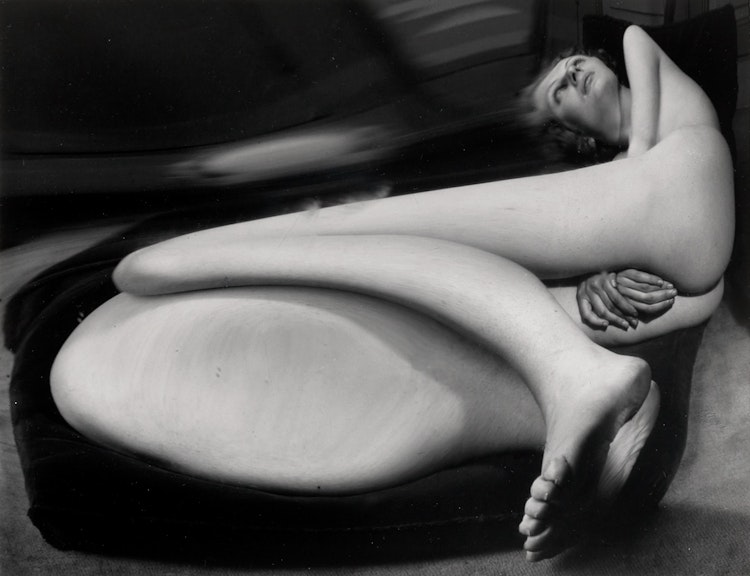Distortion #40, Paris, 1933 by André Kertész

André Kertész
Distortion #40, Paris, 1933
gelatin silver print
signed, dated 1933 and inscribed #40 on the reverse; titled and dated on a label, further titled and dated on an exhibition label on the backing on the reverse. Printed later
7.38 x 9.62 in ( 18.7 x 24.4 cm ) ( image )
Auction Estimate: $8,000.00 - $12,000.00
Price Realized $6,600.00
Sale date: November 27th 2024
Collection of the Artist, New York
Collection of the Winnipeg Art Gallery
"André Kertész–Perception d'une vie entière/A Lifetime of Perception", The Montreal Museum of Fine Arts, 24 September-14 November 1982, no. 15
"André Kertész: A Lifetime of Perception", Canadian Centre of Photography, Toronto, 7 April-8 May 1983
"The Collection on View: André Kertész: Shadow Marks", Winnipeg Art Gallery, 12 February-2 October 2011
Hilton Kramer "Introduction" in Nicolas Ducrot, "Distortions: André Kertész", New York, 1976, unpaginated
Ben Lifson and Jane Corkin, "André Kertész: A Lifetime of Perception", Scarborough, Ontario, 1982, page 167
There is a direct link between his early experiments with portrait distortion and the distortions of 1933, as Kramer continues, “One notes with interest that the image is a tender one, without the slightest suggestion of anything cruel or grotesque, for this is a key to the 'Distortions' of the early thirties.”
In 1933, when the racy French magazine "Le Sourire" commissioned him to make a series of figure studies, his full exploration of a distorted body would be fully realized. As new French magazines, such as "Vu", "Voilà" and "Regards", gained popularity, they turned to pioneering photographers of the time to fill their pages, including Kertész, Man Ray and Germaine Krull. Using a funhouse mirror from an amusement park, Kertész spent a month making about two hundred negatives.
Interestingly, it was feared that due to the severe oxidation of the original glass-plate negatives, they would be lost forever, but were eventually restored in the 1970s, honouring the artist’s devotion to his subject.
This print was produced by the artist, André Kertész, and chosen from his collection in New York by Jane Corkin for the Toronto exhibition "André Kertész: A Lifetime of Perception".
Share this item with your friends
André Kertész
(1894 - 1985)
André Kertész was one of the most influential photographers of the twentieth century. Born in Budapest, Hungary, in 1894, he received his first camera at the age of 18 and began taking portraits of his friends and family. He was drafted in 1914 into the Austro-Hungarian army in World War I, in which he brought along his camera and captured the lives of the soldiers around him.
In 1925, Kertész moved to Paris, where he started a career as a photojournalist. He began taking photographs of the Paris streets, highlighting small, insignificant details of the environment around him, which led to his popularity as a photographer. Paris was also where he met and became friends with Alexander Calder, Constantin Brancusi, Marc Chagall, and Piet Mondrian. Kertész would later photograph these famous artists and other artists who lived and worked in Paris. Kertész then relocated to New York in 1936, where he was struck by the spectacle of the city. The photographs from this era demonstrate his fascination with New York and the feeling of isolation and alienation that he experienced in this new environment. For years, Kertész was unable to publish anything due to being considered an enemy of the government during World War II, and it was only in 1964 that his career began to flourish when John Sarkowski curated a solo show of his work at the MoMA in New York.
Kertész’s work has since been shown in several major exhibitions at institutions such as the Getty Museum in Los Angeles, The Art Institute of Chicago, The Photographers' Gallery in London, and Musée National d'Art Moderne du Centre Georges Pompidou in Paris.

